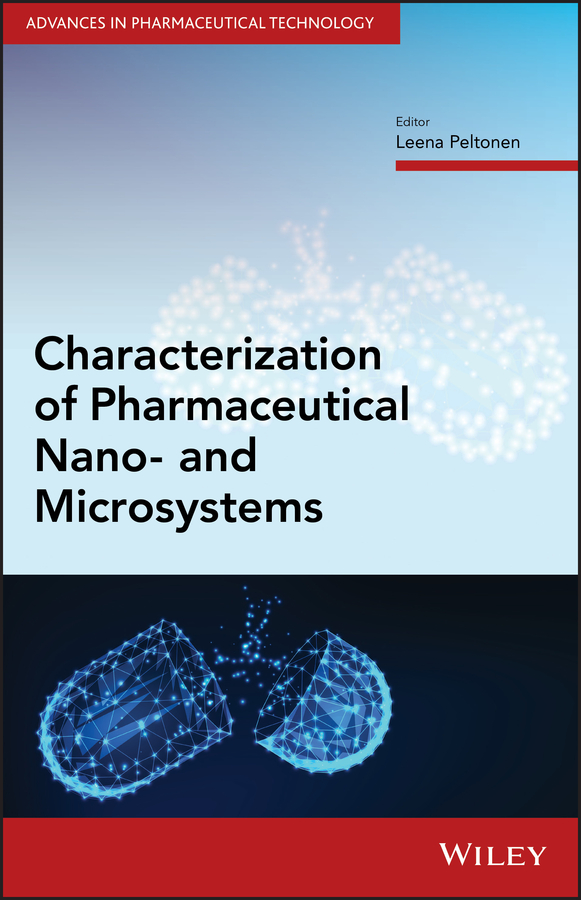<p><b>Learn about the analytical tools used to characterize particulate drug delivery systems with this comprehensive overview</b> </p> <p>Edited by a leading expert in the field, <i>Characterization of Pharmaceutical Nano- and Microsystems</i> provides a complete description of the analytical techniques used to characterize particulate drug systems on the micro- and nanoscale. </p> <p>The book offers readers a full understanding of the basic physicochemical characteristics, material properties and differences between micro- and nanosystems. It explains how and why greater experience and more reliable measurement techniques are required as particle size shrinks, and the measured phenomena grow weaker. </p> <p><i>Characterization of Pharmaceutical Nano- and Microsystems</i> deals with a wide variety of topics relevant to chemical and solid-state analysis of drug delivery systems, including drug release, permeation, cell interaction, and safety. It is a complete resource for those interested in the development and manufacture of new medicines, the drug development process, and the translation of those drugs into life-enriching and lifesaving medicines. </p> <p><i>Characterization of Pharmaceutical Nano- and Microsystems</i> covers all of the following topics: </p> <ul style=”margin-bottom: 0in; margin-top: 0in;” type=”disc”> <li style=”margin: 0in 0in 0.0001pt 0.25in; font-size: 11pt; font-family: Calibri, sans-serif; vertical-align: baseline;”>An introduction to the analytical tools applied to determine particle size, morphology, and shape </li> <li style=”margin: 0in 0in 0.0001pt 0.25in; font-size: 11pt; font-family: Calibri, sans-serif; vertical-align: baseline; user-select: text; -webkit-user-drag: none; -webkit-tap-highlight-color: transparent; cursor: text; overflow: visible;”>Common chemical approaches to drug system characterization </li> <li style=”margin: 0in 0in 0.0001pt 0.25in; font-size: 11pt; font-family: Calibri, sans-serif; vertical-align: baseline; user-select: text; -webkit-user-drag: none; -webkit-tap-highlight-color: transparent; cursor: text; overflow: visible;”>A description of solid-state characterization of drug systems </li> <li style=”margin: 0in 0in 0.0001pt 0.25in; font-size: 11pt; font-family: Calibri, sans-serif; vertical-align: baseline; user-select: text; -webkit-user-drag: none; -webkit-tap-highlight-color: transparent; cursor: text; overflow: visible;”>Drug release and permeation studies </li> <li style=”margin: 0in 0in 0.0001pt 0.25in; font-size: 11pt; font-family: Calibri, sans-serif; vertical-align: baseline; user-select: text; -webkit-user-drag: none; -webkit-tap-highlight-color: transparent; cursor: text; overflow: visible;”>Toxicity and safety issues </li> <li style=”margin: 0in 0in 0.0001pt 0.25in; font-size: 11pt; font-family: Calibri, sans-serif; vertical-align: baseline; user-select: text; -webkit-user-drag: none; -webkit-tap-highlight-color: transparent; cursor: text; overflow: visible;”>The interaction of drug particles with cells </li> </ul> <p>Perfect for pharmaceutical chemists and engineers, as well as all other industry professionals and researchers who deal with drug delivery systems on a regular basis, <i>Characterization of Pharmaceutical Nano- and Microsystems </i>also<i> </i>belongs on bookshelves of interested students and faculty who interact with this topic. </p>
Sale!
Characterization of Pharmaceutical Nano- and Microsystems
₹9,690.00
This book is currently not in stock. You are pre-ordering this book.




